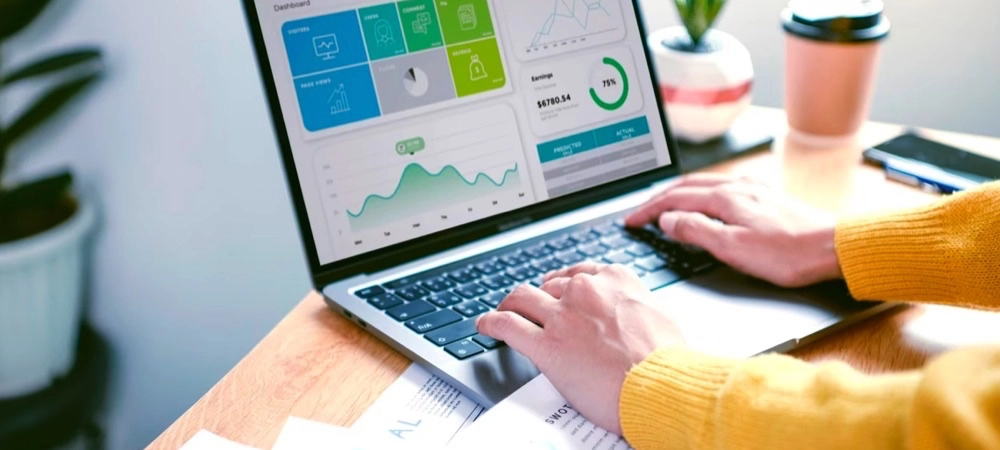What is Employee Monitoring And Benefits of Employee Monitoring Software

Table of contents
Employee monitoring, whether remote, hybrid, or office-based, is an empowering way to improve workforce productivity by providing greater insight into not only when employees work, but also how they work.
Traditional employee monitoring has historically been associated with surveillance and oversight, which can cause understandable concerns among both employees and employers.
Employee monitoring, progressive organizations understand, is simply a collection method for highly influential productivity indicators that contribute to productivity, efficiency, and employee engagement. Employee monitoring, when used correctly and transparently, can shed light on people, processes, and technology.
Also Read: What Is Employee Attrition And How To Reduce Attrition Of Employees?
What is employee monitoring?
Employee monitoring is the tracking of employee activity data in order to prevent and detect costly data breaches, increase employee engagement, and optimize inefficient workflows. Modern employee monitoring tools have recently demonstrated increased potential for comprehensive workforce analytics and employee productivity coaching opportunities. These cutting-edge tools enable businesses to improve employee performance, increase employee engagement, and reduce process inefficiencies. Organizations can increase workforce productivity and profitability by monitoring and analysing employee work behaviour.
This method’s employee monitoring and workforce activity data can be analysed to find trends, patterns, and correlations across teams, groups, and departments to gain insight into business processes and how to improve them. This data includes application usage, time spent on unproductive tasks, and the time of day when each employee is most productive. Employee monitoring provides businesses with an overall picture of how work is done in and out of the office, contextualising workforce activity data and providing insights for employers and employees alike to boost personal, team, and corporate productivity.
After reading this guide, you’ll be able to determine whether employee monitoring is right for your team, which system to use, and how to implement it.

Source- https://www.zippia.com/employer/employee-monitoring-statistics/
Types of Employee Monitoring
Employee monitoring methods in the past
Changes in technology have made it possible to track workers’ activities in a variety of ways. Only ten years ago, the majority of employee monitoring had to be done on a local level in the office. What a difference a generation can make. With this shift in how work is done, businesses must reconsider how and why employee monitoring is implemented and used. We’ll go over some of the more traditional types of employee monitoring before moving on to a more modern approach.
Internet and Email
These are two mainstays of employee work and, as a result, employee monitoring.
We all know that the internet is necessary for productivity, as long as it is used correctly and efficiently. The goal is to learn how the internet is used and see if there is anything the team can do to improve its use.
Although the use of email has declined as a result of other communication tools, understanding email communication and usage can still help with workforce productivity and efficiency.
Computer Activities
Similar to internet monitoring, some of these programmes allow employers to monitor desktop application usage. Data collected can be presented in incredibly detailed reports, highlighting how much time people dedicated to productive work, when the computer was passive, and which applications were used the most.
GPS Tracking
A company car is monitored while in use with GPS Tracking. It may be useful for delivery, courier, and postal companies to track vehicles, to help drivers travel the most efficient routes, and it can also be used for delivery status confirmation, recovering missing property, and overall safety.
Also Read: What are the Best Practices to Monitor Remote Employees?
Employee Monitoring Software Examples
We have discussed what employee monitoring software is, what it does, why it is used, and its benefits, and now we will look at specific examples of employee monitoring software.
- ProHance: ProHance is a flexible employee monitoring and productivity enhancement tool. It provides real-time information about employee activities, application usage, project tracking, and task management. ProHance’s data-driven analytics and integration capabilities assist businesses in increasing productivity, streamlining operations, and improving workforce management. It is a valuable solution for organisations seeking maximum performance and efficiency.
- Time Doctor: With time tracking capabilities accurate to the second, Time Doctor provides employees with highly detailed information about where their time has gone during official working hours. It easily enables website and application monitoring, which is supported by a robust screenshot monitoring and recording system, making it an invaluable tool for monitoring employee activities in the workplace.
- FlexiServer: FlexiServer includes automatic attendance logs, time tracking for applications and documents, website monitoring, keystroke and mouse click monitoring, and the ability to integrate monitored data with payroll software and robust reporting tools. It can operate behind firewalls and routers.
- Pivotal Tracker: Using its One View and Real-Time Collaboration features, Pivotal Tracker tracks and displays what each member of a team is doing in real time, allowing businesses to better develop target software, chart timely priorities, and simplify the overall collaboration process.
- RescueTime: Rescue Time monitors time spent on phone calls, meetings, and breaks, as well as programmes used, active windows, websites visited, and other computer activities. Such information allows managers to work with employees to address weaknesses in their work habits and improve overall workflows.
Benefits Of Employee Monitoring Software

Source- https://www.zippia.com/employer/employee-monitoring-statistics/
While you may believe that the main benefits of employee monitoring software are catching slackers and preventing theft and other security risks, this is not the case. We’ll go over a few of them below.
Less error means more learned insight
Employee monitoring software enables you to detect errors early on by revealing what your team members are currently working on. You can instruct employees to prioritise high-priority projects over low-priority ones that they are currently working on.
Work is synchronised even across time zones
You’ll be surprised at how employee monitoring can help you see what’s going on in your distributed teams across time zones and align what they’re doing. You may have some deliveries in Asia that are taking longer to complete a job, so you contact your production team in Europe to expedite the next order without losing time waiting for the Asian end of the job to complete first.
Better selection and delegation
Employee monitoring software tools promote a better understanding of your employee’s distinct abilities, allowing you to make more informed task selection and delegation decisions, improving collaboration and promoting your employee’s understanding of his talents. Team trust is increased from management to employees, allowing everyone to see the big picture.
Administrative burden is reduced
With a properly chosen employee monitoring application, you can focus on critical issues in your business rather than dragging out minor tasks. Some of these applications, for example, include automatic payments and closely monitored working hours, allowing for efficient payroll management.
Conclusion
Employee monitoring entails tracking and evaluating employees’ work-related activities, which is facilitated by software tools. Employee monitoring software has numerous advantages. It boosts productivity by identifying waste and optimising workflows. This technology improves data security by preventing breaches and ensuring adherence to company policies and industry regulations. Furthermore, it encourages accountability and performance improvement, aligning employees with organizational goals. However, striking a balance between monitoring and respecting employees’ privacy and trust is critical. Employee monitoring software becomes a valuable tool for creating a more productive, secure, and accountable work environment when used wisely and transparently, ultimately benefiting both employers and employees. Unlock efficiency with ProHance to transform your workforce management today!
Frequently Asked Questions
Q1: Is Employee Monitoring Legal?
This really depends on the country you live in, but in most cases, employee monitoring is legal. There are, however, certain requirements you must meet if you want to use computer trackers. For example, some states in the US require employers to notify employees about the monitoring, while others do not. The same is true for all other countries around the world.
Q2: What Is Remote Employee Monitoring?
Remote employee monitoring is similar to traditional employee tracking, but for remote teams. Most employee monitoring software that is used for office employees can also be used for remote teams. However, you won’t be able to track them in stealth mode in this case, and you should pay attention to the laws of their country to ensure you’re monitoring them legally.
Q3: What are the most important advantages of employee monitoring for businesses?
Employee monitoring provides several advantages to businesses, including increased productivity, improved security, better time management, and insights into employee performance. It can assist in identifying areas where processes can be streamlined and resources allocated more efficiently, resulting in increased profitability and a competitive advantage in the market.
Q4: How can businesses strike a balance between employee privacy and the need for monitoring?
It is critical to strike a balance between employee privacy and monitoring. Companies can accomplish this by developing clear and transparent monitoring policies, informing employees about the monitoring, and ensuring that the monitoring is limited to work-related activities. Companies can protect employee privacy while benefiting from monitoring tools by maintaining open communication, respecting personal boundaries, and using monitoring data to improve work processes rather than micromanaging.



